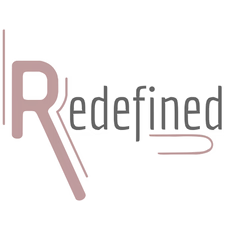
From the Past to the Present: A Brief History of Islamic Dress
In every fold of fabric, in every carefully styled drape, the hijab tells a story—of faith, identity, and timeless grace. At Redefined U, we honour that legacy with every piece we create. As modest fashion continues to redefine global style, the hijab remains a powerful symbol of both tradition and personal expression. This is the story of how the hijab has evolved—woven through history, shaped by culture, and embraced by confident women around the world, including right here in Australia.
Origins of Islamic Dress and the Hijab
The origins of modest dress in Islam begin with the teachings of the Qur’an and the traditions of the Prophet Muhammad (PBUH). While modesty applies to both men and women, the hijab has become one of its most recognisable expressions. More than a piece of cloth, it reflects values of dignity, privacy, and devotion. In early Islamic society, women wore loose, flowing garments and veils as part of their cultural and spiritual identity. The hijab’s purpose has always extended beyond appearance—it's about carrying oneself with confidence, grace, and purpose.
Cultural and Regional Hijab Styles
As Islam reached new lands, the hijab transformed to reflect local culture while staying true to Islamic principles. From the shimmering Shayla of the Gulf, to the practical Khimar in parts of Africa, to the Pashmina-style hijabs embraced in colder climates—the versatility of the hijab reflects the diversity of Muslim women worldwide. Each variation is a beautiful blend of faith and fashion, proving that modesty can be as individual as the woman who wears it.
Hijabs Through History
Throughout history, hijabs have adapted to the times without compromising their core meaning. In the Ottoman era, for example, layered fabrics and detailed embroidery elevated head coverings to symbols of elegance. Similarly, in Mughal India, veils were styled with luxurious textiles and jewels. Whether functional or fashionable, the hijab always remained a part of a woman’s expression of modesty and identity.
Colonialism, Modernisation, and Identity
The colonial period brought significant cultural shifts. In many Muslim societies, hijabs were discouraged or even banned, symbolising a struggle between imposed norms and preserved beliefs. But through adversity, Muslim women held onto their identity—often through what they wore. The hijab became a quiet yet powerful act of resistance and self-definition.
The 20th Century: Hijab Revival and Redefinition
The 20th century witnessed a hijab revival. No longer viewed only through a religious lens, it became a political and cultural symbol, especially in diaspora communities. Muslim women around the world—including Australia—began to reclaim the hijab on their own terms: not just as an obligation, but as a proud, empowering choice.
Today’s Modest Fashion and the Rise of Hijab Culture
Today, the hijab is celebrated globally as part of a growing modest fashion movement. Explore the Bamboo Hijab category. In Australia, Muslim women are embracing hijabs not just as religious attire, but as statements of style and identity. Social media, Muslim influencers, and ethical brands like Redefined U have played a key role in making hijab fashion more accessible, inclusive, and elegant. Each piece we offer is designed with you in mind, crafted to reflect the modern woman’s need for beauty, comfort, and authenticity.
Why the Hijab Still Matters
The hijab remains a timeless symbol of faith, resilience, and self-respect. It’s how many women choose to honour their beliefs while moving confidently in a modern world. At Redefined U, we believe your hijab should reflect who you are—sophisticated, strong, and unapologetically you.
Conclusion
From ancient traditions to contemporary trends, the hijab has stood the test of time—adapting, evolving, and empowering. At Redefined U, we’re proud to be part of your journey.
